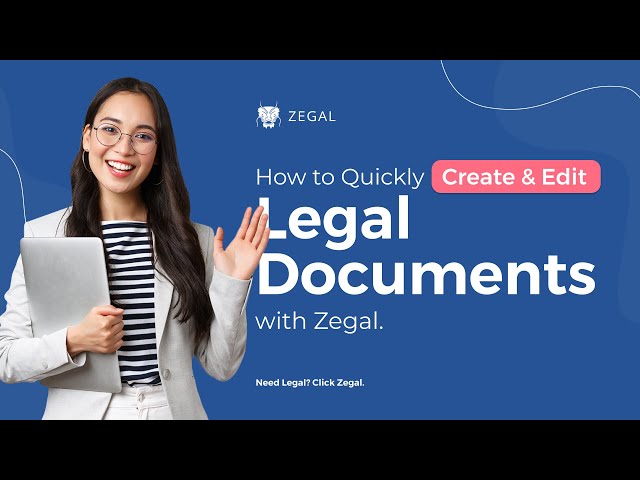How to generate a Notice of Annual General Meeting (AGM)
What is a Notice of an Annual General Meeting (AGM)?
What is a Notice of an Annual General Meeting (AGM)?
A Notice of an Annual General Meeting (AGM) is an official announcement calling for a gathering of a company’s shareholders.
This notice is required to be distributed at least 21 days before the AGM to ensure that all shareholders have ample time to prepare for the meeting. For other types of general meetings, a minimum of 14 days’ notice is required, unless stipulated differently by the company’s Articles of Association.
The notice must be delivered to every shareholder and director of the company, ensuring all relevant parties are informed and have the opportunity to participate in the meeting.
What is a Notice of an Annual General Meeting for?
An AGM notice serves several key purposes:
- Notification: It officially notifies all eligible members about the date, time, and location of the AGM, which may be held in a physical location, virtually, or in a hybrid format.
- Agenda: The notice outlines the agenda items to be discussed and resolved during the meeting. Common agenda items include the approval of financial statements, appointment or reappointment of auditors, election of board members, and any resolutions that require shareholder approval.
- Instructions for Participation: For shareholders, the notice provides details on how they can participate in the AGM, including how to vote on resolutions either in person, by proxy, or electronically (in case of virtual or hybrid meetings).
- Supporting Documents: Often, the notice is accompanied by additional documents, such as the annual report, financial statements, and proxy forms, to help shareholders make informed decisions on the matters to be voted upon.
- Legal Requirement: Issuing a notice of AGM is a legal requirement for limited companies in many jurisdictions. The notice must be sent within a specific timeframe before the meeting, typically 21 days in advance, though the exact requirement can vary depending on the company’s bylaws and local laws.
- Record Date: The notice may also mention the record date, which is the cut-off date for determining which shareholders are entitled to receive the notice, attend the AGM, and vote.
The AGM is a key event in the corporate calendar, providing an opportunity for shareholders to receive updates on the company’s performance, its future strategy, and to engage with the company’s management and board of directors. It also fulfills a legal requirement for companies to hold an annual meeting where shareholders can exercise their rights in the governance of the company.
How to write the minutes of an AGM meeting
Writing the minutes of an Annual General Meeting (AGM) is a crucial task that ensures all discussions, decisions, and actions taken during the AGM are accurately recorded and accessible for future reference.
AGM minutes serve as an official record of the meeting and are essential for maintaining transparency and accountability within the company. Here are the key considerations for writing effective AGM minutes:
Date, Time, and Venue: Begin by documenting the date, time, and location of the AGM. This foundational information sets the context for the minutes and is essential for organizing and archiving the company’s records.
List of Attendees: Include a comprehensive list of all shareholders, directors, and any other participants who attended the AGM. Noting who was present helps to validate the proceedings and decisions made during the meeting.
Agenda of the AGM: Clearly outline the agenda items discussed during the AGM. A structured agenda facilitates a focused discussion and ensures that all necessary topics are covered. It’s also helpful for shareholders to review what was planned versus what was actually discussed.
Decisions and Action Plans: For each agenda item, detail the discussions that took place, any decisions that were made, and the action plans set forth. This includes the outcomes of any votes, such as the election of directors, approval of financial statements, and any resolutions passed. Clearly articulating these elements in the minutes is crucial for accountability and for guiding future actions.
Next AGM or Meeting Details: If applicable, include information about the next scheduled AGM or any upcoming meetings. This ensures participants are aware of future engagements and can prepare accordingly.
Remember, the minutes of an AGM should be clear, concise, and accurate, reflecting a true and fair view of the proceedings. They are a legal document and may be reviewed by shareholders, auditors, or regulatory bodies to ensure compliance with corporate governance standards.
For those tasked with the responsibility of drafting AGM minutes, leveraging a structured template can greatly assist in ensuring all necessary information is captured efficiently and effectively. Zegal offers a range of templates designed to support your corporate governance needs, including a template for AGM minutes. Utilizing such resources can streamline the process, ensuring your AGM minutes are comprehensive and compliant with legal requirements.
Why is a Notice of Annual General Meeting important?
The notice is crucial for ensuring that all shareholders are given an opportunity to be part of the decision-making process of the company. It typically includes details such as the date, time, and venue of the meeting, as well as the agenda items to be discussed and voted on. The notice ensures transparency, encourages shareholder participation, and fulfills legal requirements.
Crafting an effective Notice of AGM
Creating a clear and informative Notice of AGM is vital for engaging shareholders and encouraging their participation in the meeting. The notice should:
- Specify the purpose of the meeting.
- List the agenda items clearly.
- Provide instructions on how to attend the meeting (including virtual attendance, if applicable).
- Explain the voting process, including how votes will be counted and how shareholders can vote if they cannot attend in person.
- Include any relevant documents or information that will be discussed at the meeting.
For companies preparing to hold their AGM, creating a comprehensive and legally compliant Notice of AGM is paramount. Zegal offers a versatile template designed to simplify this process, ensuring that your notice meets all legal requirements while being clear and accessible to all shareholders. Begin crafting your Notice of AGM today with Zegal’s expertly designed template, and take the first step towards a successful and productive Annual General Meeting.
Explore further with Zegal’s range of related documents and templates that can support your AGM and other corporate governance needs:
- Notice of Board Meeting
- Notice of a Special Meeting of the Directors
- Notice of Special Meeting of Shareholders
- Shareholders’ Resolution in Lieu of an Annual General Meeting (AGM)
- Shareholders’ Resolution to Remove Need for an Annual General Meeting (AGM)
By leveraging Zegal’s templates and resources, you can ensure your AGM and other corporate meetings are conducted efficiently, compliantly, and with the highest level of engagement from your shareholders.
Stay compliant with the Zegal template library
Zegal legal template are meticulously crafted with the precision of AI and the expertise of seasoned human lawyers, providing a unique blend of speed and reliability.
You can trust that Zegal agreements are legally sound and fully compliant with current regulations.
Whether you're a startup, SME, or a larger enterprise, Zegal contract management will automate and speed up your legal processes.
Using Zegal will reduce risk, save money, and improve efficiency. Let us take care of the paperwork so you can focus on running your business.
Don’t compromise on speed or compliance. Stay secure, compliant, and efficient with Zegal.






